-
 Bitcoin
Bitcoin $105,213.9543
-1.43% -
 Ethereum
Ethereum $2,534.1529
-5.66% -
 Tether USDt
Tether USDt $1.0004
0.02% -
 XRP
XRP $2.1293
-3.62% -
 BNB
BNB $651.6070
-1.04% -
 Solana
Solana $145.6637
-5.96% -
 USDC
USDC $0.9996
-0.01% -
 Dogecoin
Dogecoin $0.1768
-4.52% -
 TRON
TRON $0.2701
-0.48% -
 Cardano
Cardano $0.6330
-5.47% -
 Hyperliquid
Hyperliquid $41.0199
-0.92% -
 Sui
Sui $3.0216
-7.45% -
 Bitcoin Cash
Bitcoin Cash $435.1142
1.00% -
 Chainlink
Chainlink $13.1295
-7.22% -
 UNUS SED LEO
UNUS SED LEO $9.0033
1.58% -
 Stellar
Stellar $0.2582
-4.32% -
 Avalanche
Avalanche $19.0562
-7.26% -
 Toncoin
Toncoin $2.9869
-4.96% -
 Shiba Inu
Shiba Inu $0.0...01192
-3.81% -
 Hedera
Hedera $0.1561
-5.81% -
 Litecoin
Litecoin $84.9066
-3.04% -
 Polkadot
Polkadot $3.7754
-5.29% -
 Ethena USDe
Ethena USDe $1.0002
-0.02% -
 Monero
Monero $308.5756
-4.32% -
 Dai
Dai $0.9997
-0.01% -
 Bitget Token
Bitget Token $4.5027
-2.45% -
 Uniswap
Uniswap $7.3970
-4.96% -
 Pepe
Pepe $0.0...01090
-7.41% -
 Aave
Aave $279.5603
-5.99% -
 Pi
Pi $0.5658
-8.02%
How to mine Bitcoin at low cost? Hardware configuration and electricity cost optimization plan
To mine Bitcoin cost-effectively, choose efficient ASIC miners like Antminer S19 and optimize electricity costs by using renewable energy and negotiating rates.
Jun 09, 2025 at 11:07 pm

Mining Bitcoin can be a lucrative venture, but it comes with significant costs, particularly in terms of hardware and electricity. This article will delve into how you can mine Bitcoin at a lower cost by focusing on the right hardware configuration and optimizing your electricity expenses.
Understanding Bitcoin Mining
Bitcoin mining is the process by which new bitcoins are entered into circulation. It involves solving complex mathematical problems to validate transactions on the Bitcoin network. Miners are rewarded with bitcoins for their efforts, but the profitability of mining depends heavily on the efficiency of the hardware used and the cost of electricity.
Choosing the Right Hardware
To mine Bitcoin at a low cost, selecting the appropriate hardware is crucial. The most efficient hardware for Bitcoin mining is the ASIC (Application-Specific Integrated Circuit) miner. These devices are specifically designed for mining cryptocurrencies and are far more efficient than CPUs or GPUs.
- Antminer S19: This is one of the most popular ASIC miners on the market. It offers a high hash rate of up to 110 TH/s and a power efficiency of 29.5 J/TH.
- WhatsMiner M30S: Another high-performance ASIC miner, it boasts a hash rate of 88 TH/s and a power efficiency of 34 J/TH.
When choosing an ASIC miner, consider the following factors:
- Hash rate: The higher the hash rate, the more calculations your miner can perform per second, increasing your chances of solving the mining puzzle and earning bitcoins.
- Power efficiency: Measured in joules per terahash (J/TH), a lower value indicates better energy efficiency, which is crucial for reducing electricity costs.
- Cost: While more efficient miners are generally more expensive, they can lead to higher net profits over time due to their superior performance and efficiency.
Optimizing Electricity Costs
Electricity costs can make or break the profitability of Bitcoin mining. Here are several strategies to optimize your electricity expenses:
- Choose a location with low electricity rates: Some regions offer significantly lower electricity rates than others. For instance, countries like Iceland and Iran have lower electricity costs, making them attractive for mining operations.
- Use renewable energy sources: If possible, consider using renewable energy sources like solar or wind power. These can significantly reduce your electricity bills and are more environmentally friendly.
- Negotiate with utility companies: Some utility companies offer special rates for large consumers. It’s worth negotiating to see if you can get a better deal on your electricity costs.
- Implement energy-efficient cooling systems: Mining rigs generate a lot of heat, and efficient cooling is essential to maintain their performance. Using energy-efficient cooling systems can reduce your overall electricity consumption.
Setting Up Your Mining Rig
Setting up your mining rig involves several steps. Here’s a detailed guide on how to do it:
- Purchase the ASIC miner: Choose the model that best fits your budget and efficiency requirements. Order it from a reputable seller.
- Set up the mining software: Popular mining software includes CGMiner and BFGMiner. Download and install the software on a computer that will control your mining rig.
- Connect the hardware: Plug in your ASIC miner and connect it to your computer via Ethernet or USB, depending on the model.
- Configure the mining pool: Join a mining pool to increase your chances of earning bitcoins. Configure your mining software to connect to the pool’s server.
- Start mining: Once everything is set up, start the mining software and let your ASIC miner begin solving the complex algorithms required to mine Bitcoin.
Monitoring and Maintenance
To ensure your mining operation remains cost-effective, regular monitoring and maintenance are essential:
- Monitor performance: Use software to track the performance of your mining rig. Look for any drops in hash rate or increases in power consumption, which could indicate a problem.
- Clean the hardware: Dust and debris can accumulate on your ASIC miner, leading to overheating and reduced performance. Regularly clean the hardware to maintain its efficiency.
- Update firmware: Manufacturers often release firmware updates that can improve the performance and efficiency of your ASIC miner. Keep your firmware up to date to ensure you’re getting the best possible results.
Calculating Profitability
To determine if your Bitcoin mining operation is cost-effective, you need to calculate its profitability. Here’s how to do it:
- Calculate your costs: Add up the cost of your hardware, electricity, and any other expenses related to mining.
- Estimate your earnings: Use a Bitcoin mining calculator to estimate how much you can earn based on your hash rate and the current Bitcoin price.
- Subtract costs from earnings: Your profit is the difference between your estimated earnings and your total costs. If this number is positive, your mining operation is profitable.
Frequently Asked Questions
Q: Can I mine Bitcoin using a regular computer?
A: While it is technically possible to mine Bitcoin using a regular computer with a CPU or GPU, it is not cost-effective. ASIC miners are far more efficient and are the standard for Bitcoin mining.
Q: How long does it take to break even on an ASIC miner?
A: The time it takes to break even depends on various factors, including the cost of the miner, electricity rates, and the Bitcoin price. On average, it can take anywhere from 6 months to 2 years to break even.
Q: Is it legal to mine Bitcoin?
A: The legality of Bitcoin mining varies by country. In many places, it is legal, but some countries have restrictions or outright bans. It’s important to check the laws in your jurisdiction before starting a mining operation.
Q: Can I use a mining pool to reduce costs?
A: Joining a mining pool can increase your chances of earning bitcoins more consistently, but it does not directly reduce costs. However, by earning more frequently, you can better manage your cash flow and potentially offset some of your expenses.
Disclaimer:info@kdj.com
The information provided is not trading advice. kdj.com does not assume any responsibility for any investments made based on the information provided in this article. Cryptocurrencies are highly volatile and it is highly recommended that you invest with caution after thorough research!
If you believe that the content used on this website infringes your copyright, please contact us immediately (info@kdj.com) and we will delete it promptly.
- XRP Price Shows Signs of a Bullish Recovery, With Analysts Watching Levels for an Upside Breakout
- 2025-06-14 04:50:12
- XRP Price Shows Signs of a Bullish Recovery, as Analysts Watch Levels for an Upside Breakout
- 2025-06-14 04:50:12
- Leading Cryptocurrencies Dipped Despite Lower-Than-Expected Inflation and the New Trade Deal Announcement with China.
- 2025-06-14 04:45:12
- XRP Price Prediction: Can the Token Reach $73 This Cycle?
- 2025-06-14 04:40:12
- Bitcoin Hashrate Reaches All-Time High, Exceeding 943 EH/s
- 2025-06-14 04:40:12
- Bitcoin Hits Local ATH but Analysts Warn: Time to Sell and Watch Key Support
- 2025-06-14 04:35:13
Related knowledge
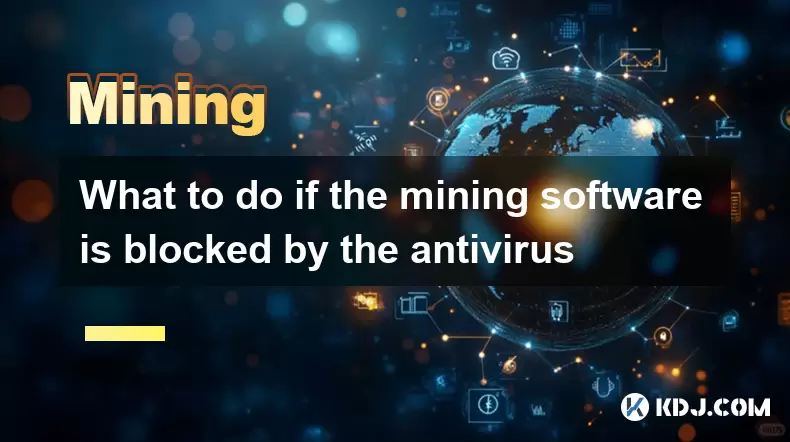
What to do if the mining software is blocked by the antivirus
Jun 13,2025 at 02:43am
Understanding Why Antivirus Software Blocks Mining SoftwareWhen using mining software, it's not uncommon for antivirus programs to flag or block them. This typically occurs because mining software is often associated with malicious activity, especially in the case of cryptojacking attacks where hackers deploy unauthorized miners on unsuspecting systems....
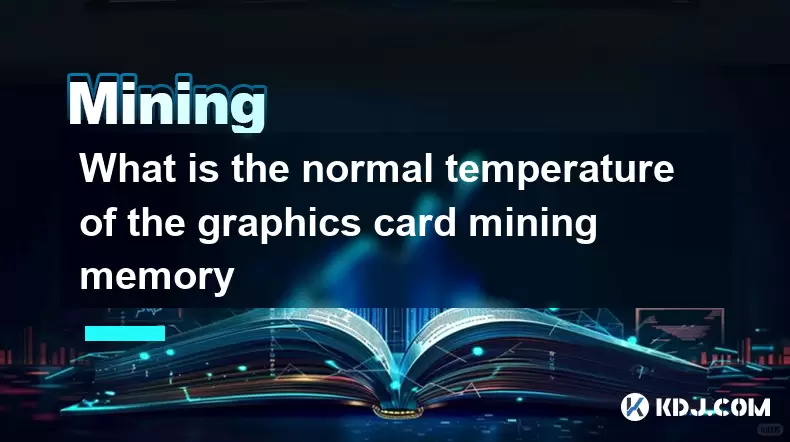
What is the normal temperature of the graphics card mining memory
Jun 13,2025 at 06:35am
Understanding the Normal Temperature of Graphics Card Mining MemoryThe temperature of graphics card mining memory is a critical factor in maintaining optimal performance and longevity during cryptocurrency mining. While different models of GPUs have varying thermal tolerances, the general normal operating temperature range for mining memory (VRAM) typic...
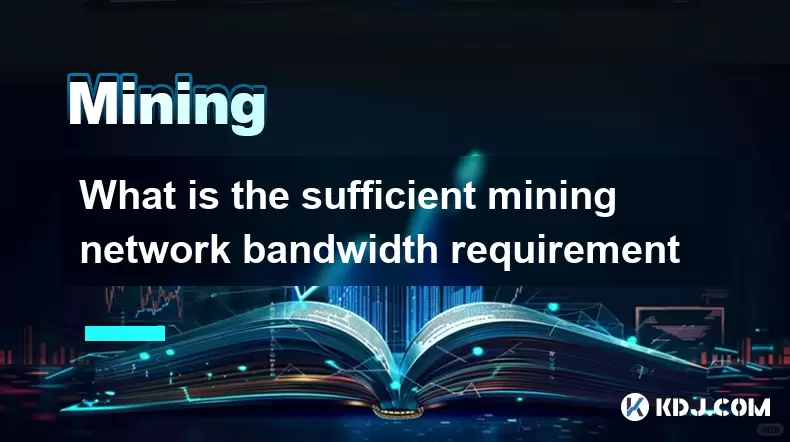
What is the sufficient mining network bandwidth requirement
Jun 12,2025 at 06:35am
Understanding the Basics of Mining Network BandwidthCryptocurrency mining involves solving complex mathematical problems to validate transactions and add them to the blockchain. This process requires constant communication between your mining hardware (such as ASICs or GPUs) and the mining pool or node you are connected to. Network bandwidth refers to t...
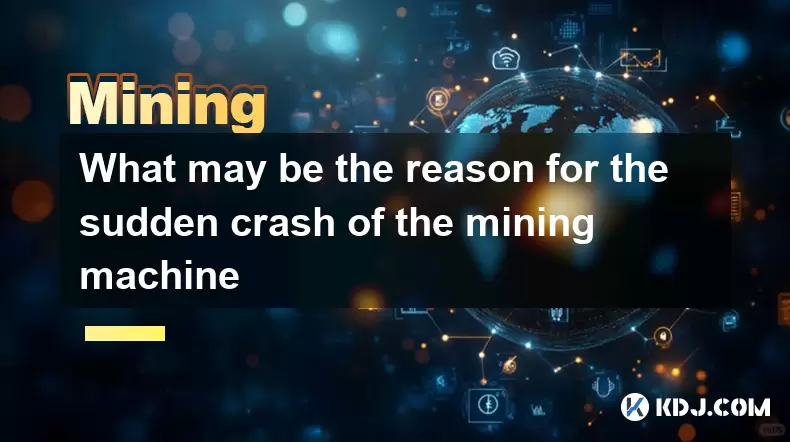
What may be the reason for the sudden crash of the mining machine
Jun 13,2025 at 12:57am
Power Supply IssuesA sudden crash of a mining machine can often be traced back to power supply problems. Mining rigs require stable and sufficient power to operate continuously. If the power supply unit (PSU) is underpowered or malfunctioning, it may not provide enough electricity to all components, especially during peak performance. This could lead to...
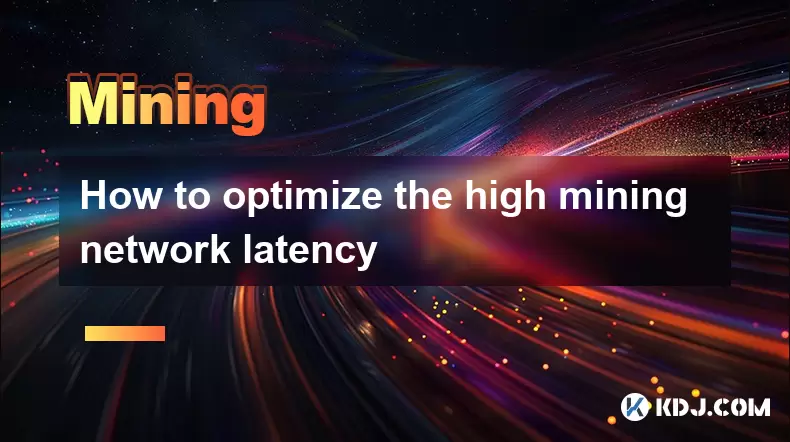
How to optimize the high mining network latency
Jun 13,2025 at 07:00am
Understanding the Impact of High Mining Network LatencyIn cryptocurrency mining, network latency refers to the time delay between a mining rig sending a request and receiving a response from the mining pool or blockchain network. When this delay becomes significant, it can result in stale shares, reduced mining efficiency, and ultimately lower profitabi...
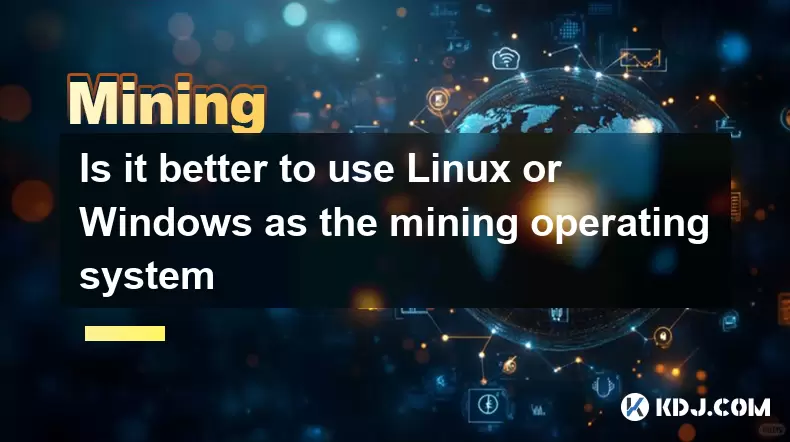
Is it better to use Linux or Windows as the mining operating system
Jun 13,2025 at 04:14am
Stability and Performance of Mining SystemsWhen it comes to cryptocurrency mining, system stability is one of the most critical factors. Linux-based systems are often praised for their robustness and minimal resource consumption. Unlike Windows, which runs numerous background processes, Linux distributions tailored for mining, such as EthOS or HiveOS, o...

What to do if the mining software is blocked by the antivirus
Jun 13,2025 at 02:43am
Understanding Why Antivirus Software Blocks Mining SoftwareWhen using mining software, it's not uncommon for antivirus programs to flag or block them. This typically occurs because mining software is often associated with malicious activity, especially in the case of cryptojacking attacks where hackers deploy unauthorized miners on unsuspecting systems....

What is the normal temperature of the graphics card mining memory
Jun 13,2025 at 06:35am
Understanding the Normal Temperature of Graphics Card Mining MemoryThe temperature of graphics card mining memory is a critical factor in maintaining optimal performance and longevity during cryptocurrency mining. While different models of GPUs have varying thermal tolerances, the general normal operating temperature range for mining memory (VRAM) typic...

What is the sufficient mining network bandwidth requirement
Jun 12,2025 at 06:35am
Understanding the Basics of Mining Network BandwidthCryptocurrency mining involves solving complex mathematical problems to validate transactions and add them to the blockchain. This process requires constant communication between your mining hardware (such as ASICs or GPUs) and the mining pool or node you are connected to. Network bandwidth refers to t...

What may be the reason for the sudden crash of the mining machine
Jun 13,2025 at 12:57am
Power Supply IssuesA sudden crash of a mining machine can often be traced back to power supply problems. Mining rigs require stable and sufficient power to operate continuously. If the power supply unit (PSU) is underpowered or malfunctioning, it may not provide enough electricity to all components, especially during peak performance. This could lead to...

How to optimize the high mining network latency
Jun 13,2025 at 07:00am
Understanding the Impact of High Mining Network LatencyIn cryptocurrency mining, network latency refers to the time delay between a mining rig sending a request and receiving a response from the mining pool or blockchain network. When this delay becomes significant, it can result in stale shares, reduced mining efficiency, and ultimately lower profitabi...

Is it better to use Linux or Windows as the mining operating system
Jun 13,2025 at 04:14am
Stability and Performance of Mining SystemsWhen it comes to cryptocurrency mining, system stability is one of the most critical factors. Linux-based systems are often praised for their robustness and minimal resource consumption. Unlike Windows, which runs numerous background processes, Linux distributions tailored for mining, such as EthOS or HiveOS, o...
See all articles

























































































